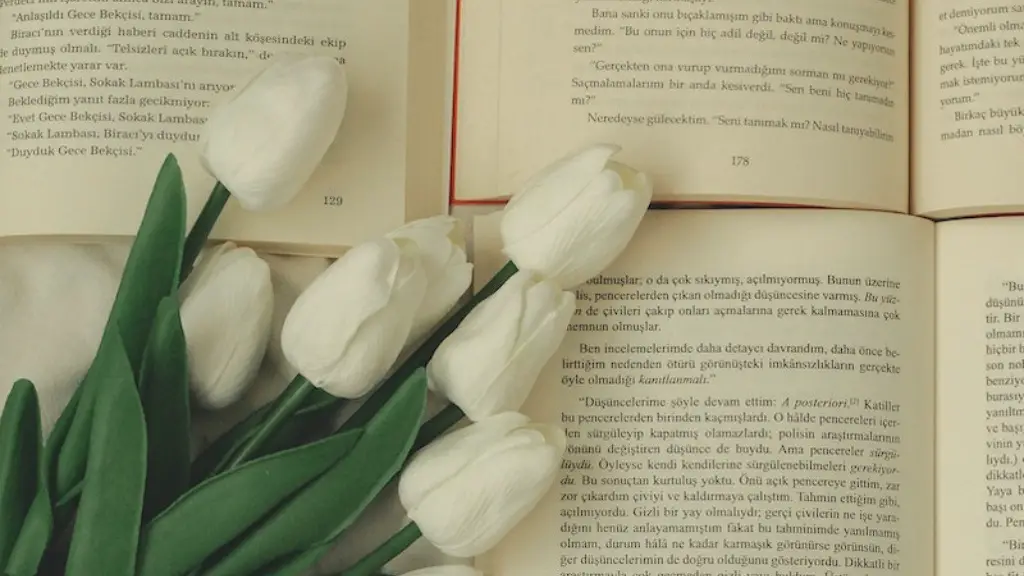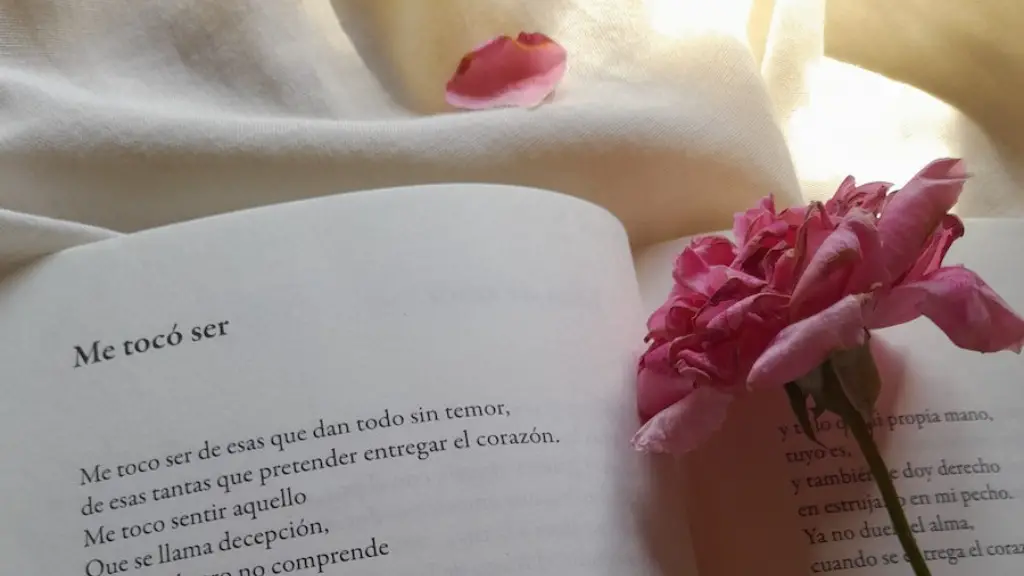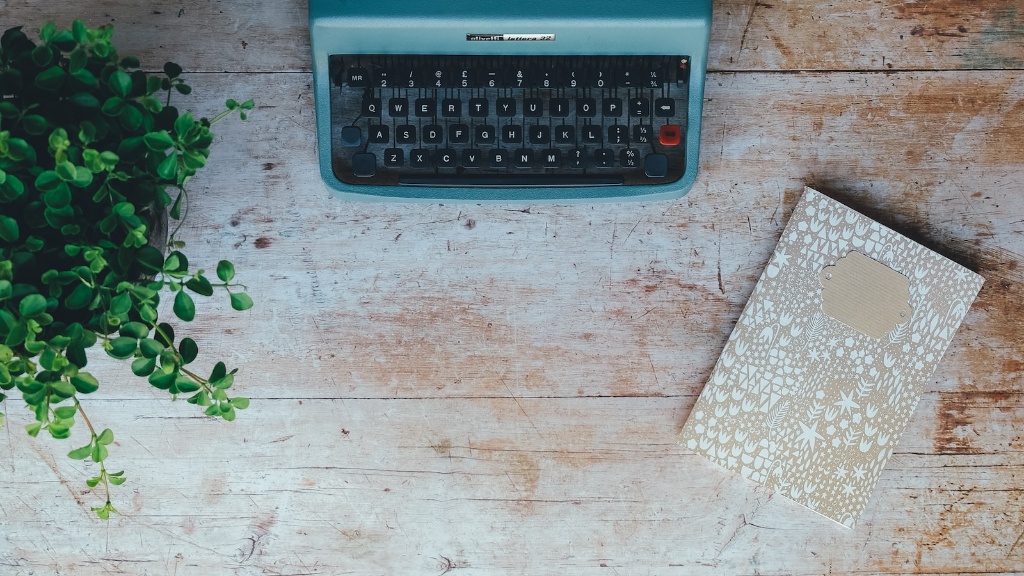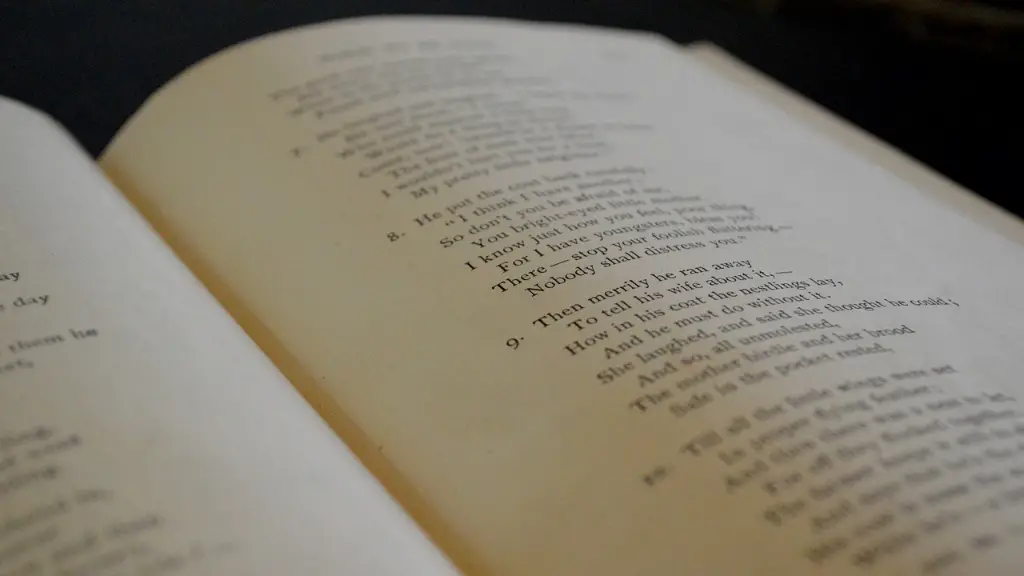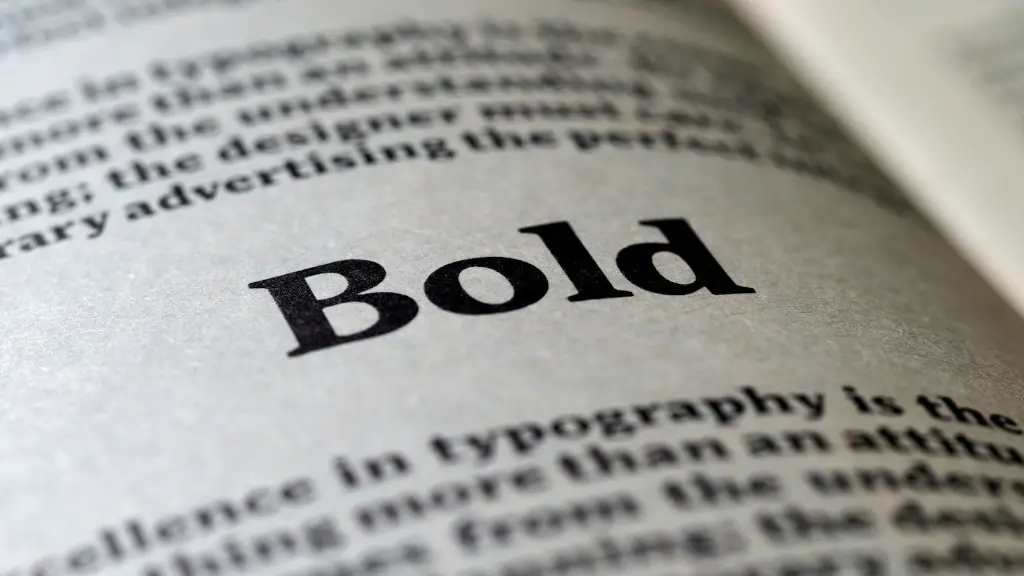Poetry is one of the oldest forms of written expression, predating even writing itself, and its origins can be traced back to the earliest chants and songs of ancient peoples. Poetry has its roots in oral history and storytelling, and has been described as the “original literary art”, as well as a “natural expression of feeling and emotion.”
The earliest form of poetry can be traced back to the Epic of Gilgamesh, a collection of ancient Sumerian poems of the third millennium BCE, which tells the story of a legendary king of Sumer. From Sumerian poetry, the form spread to other early civilizations such as Egypt, Greece, and Rome. In these cultures, poetry became entwined with stories, legends, and myths, and was used to commemorate the deeds of the gods and heroic figures.
In Western literature, the earliest examples of poetry can be found in The Iliad and The Odyssey of Homer, two epic Greek poems composed around the 8th century BCE. These works provided a template for future poets, incorporating oral and literary techniques such as myth, anecdote, and metaphor. By the 5th century BC, the Greek philosopher Aristotle was describing the art of poetry as an “organized and systematic approach to writing.”
In the Middle Ages, poetry continued to be a major form of literature, with many great works written in the tradition of courtly love, such as Romance of the Rose by Guillaume de Lorris and the Song of Roland by anonymous French author. In addition, religious and spiritual works such as the Divine Comedy by Dante Alighieri and the Fairie Queene by Edmund Spencer blended mythic and spiritual themes in vivid lyrical form.
Modern poetry began to emerge during the Renaissance, with the works of playwrights such as William Shakespeare, John Donne, and Ben Jonson, who developed the use of blank verse to create a heightened sense of music, emotion, and beauty, as well as introducing new forms and structures such as the sonnet. In the 19th and 20th centuries, poetry became increasingly experimental and diverse, with influences from surrealism and other avant-garde movements, resulting in works such as The Waste Land by T.S. Eliot, The Cantos by Ezra Pound, and Howl by Allen Ginsberg.
Today, poetry remains a vital and vibrant art form, and continues to evolve, with contemporary poets exploring themes such as identity, gender, race, and technology in imaginative and accessible ways. While it has been said that “poetry is, indeed, a timeless art”, its power lies in its ability to capture and express the eternal truths of the human experience.
Types of Poetry
Poetry is a wide-ranging form of expression and there are many diverse types and styles of poetry, each with its own unique characteristics. The most common types of poetry are lyric poetry, narrative poetry, epic poetry, sonnets, haiku, and free verse.
Lyric poetry is the most personal form of poetry and is often used to convey an emotional state. It often has a pastoral or romantic tone, and is characterized by short, concise phrases and imagery. Examples of lyric poetry include The Rime of the Ancient Mariner by Samuel Taylor Coleridge and The Road Not Taken by Robert Frost.
Narrative poetry, on the other hand, is a longer form of poetry that tells a story. It usually follows a specific pattern or meter, and often incorporates characters and settings found in mythology or folklore. Examples of narrative poetry include Beowulf and The Odyssey of Homer.
Epic poetry is an even longer form of narrative poetry that covers a wide range of topics, often concerning great deeds and brave heroes. It usually has a narrative structure and employs devices such as repetition, metonymy, metaphor, simile, and hyperbole. Examples of epic poetry include The Epic of Gilgamesh, The Iliad of Homer, and The Aeneid of Virgil.
Sonnets are a form of lyric poetry traditionally written in fourteen lines of iambic pentameter. They usually follow a set rhyme scheme and employ devices such as conceit and metaphor to express a thought or emotion. Examples of sonnets include Sonnet 18 by William Shakespeare and Death, Be Not Proud by John Donne.
Haiku is a form of Japanese poetry composed of three lines of five, seven, and five syllables respectively, evoking images of nature or the beauty of the natural world. Examples of haiku include Falling rain – / The sound of the bird’s / song fading away and A winter’s day – / Closing eyes in silent peace / The snow will return.
Finally, free verse is a type of poetry that does not adhere to any particular formal structure or rules. It often has a rhyme and meter, but with a freer flow, making it a popular form of expression among contemporary poets. Examples of free verse include Leaves of Grass by Walt Whitman and The Waste Land by T.S. Eliot.
Role of Poetry in Society
Poetry has played an important role in society throughout history, and continues to do so today. It has served as a powerful form of communication and has influenced the way people think and express themselves.
Poetry is often used to articulate thoughts and feelings that are difficult to put into words. It can be used to express deep emotions, to connect with others, and to create unity within communities. It also has the power to move, to motivate, to inspire, and to initiate change.
It has been argued that poetry “enhances our understanding of life”, and many of the greatest authors, thinkers and leaders have used poetry to express ideas and stimulate creativity. It has been used to explore politics and history, to debate controversial topics and to create art. Additionally, poetry has been used as a tool to educate and to challenge the status quo.
Poetry is also used to express individual identity, as well as communal identity. Through its use of symbolism, imagery, and metaphor, it is capable of connecting people to their environment, and conveying an understanding of culture and history. Thus, it often acts as an important source of connection and identity for members of a community.
Finally, poetry can be a powerful form of therapy, providing an outlet for emotions such as fear, grief and sorrow. It can also be used to celebrate joy and success, to reflect on life experiences, and to aid personal growth and understanding.
Analysis of Poetry
When interpreting a poem, it is important to consider the elements of language and literary devices used in the text. These devices can be used to convey different meanings and deepen the reader’s understanding of the poem.
For example, rhyme and meter are used to create rhythm and flow, and to emphasize certain words. Alliteration and assonance are used to create emphasis and texture. Imagery and symbolism can be used to evoke emotion and to create connections between ideas and images.
A poem can also be analyzed in terms of its structure and form. The elements of the poem, such as its length, its meter, and its rhyme scheme, can reveal a great deal about the author’s intent, and can provide clues to the poem’s meaning.
When analysing poetry, it is important to read the poem several times and to take into consideration the thoughts, feelings, and images it evokes. It is also helpful to research the poem’s literary context, and to consider the author’s biography and life circumstances in order to gain an understanding of the poem’s purpose.
History of Poetry in Education
Poetry in education has a long history, with references to its use in ancient Greece, Rome, and even the Middle Ages. It has been used as a form of instruction, as a way to communicate values, and as an avenue for creative expression.
In recent centuries, poetry in education has been used to stimulate creativity and imagination, while also teaching language and literacy skills. During the Romantic era, poet-educators such as William Wordsworth and Ralph Waldo Emerson believed that poetry could inspire self-reflection and increase awareness of the beauty of nature.
In the 20th century, poetry was used to teach children about language and literary techniques, as well as to entertain. In the 21st century, poetry is often used in the classroom to help students understand complex concepts, foster critical thinking skills, and express their feelings.
Today, poetry continues to be embraced in education, and many students are encouraged to write their own poetry as a way to learn and understand language, to develop imagination and creativity, and to appreciate the beauty of words.
Conclusion
Poetry is one of the oldest forms of expression, and has its origins in oral history and storytelling. It has been used throughout our history to express thoughts and feelings, to communicate values, and to inspire. Its use in education has been continuous, with the aim of stimulating creativity and imagination, teaching language and literacy skills, and helping students understand complex concepts.
